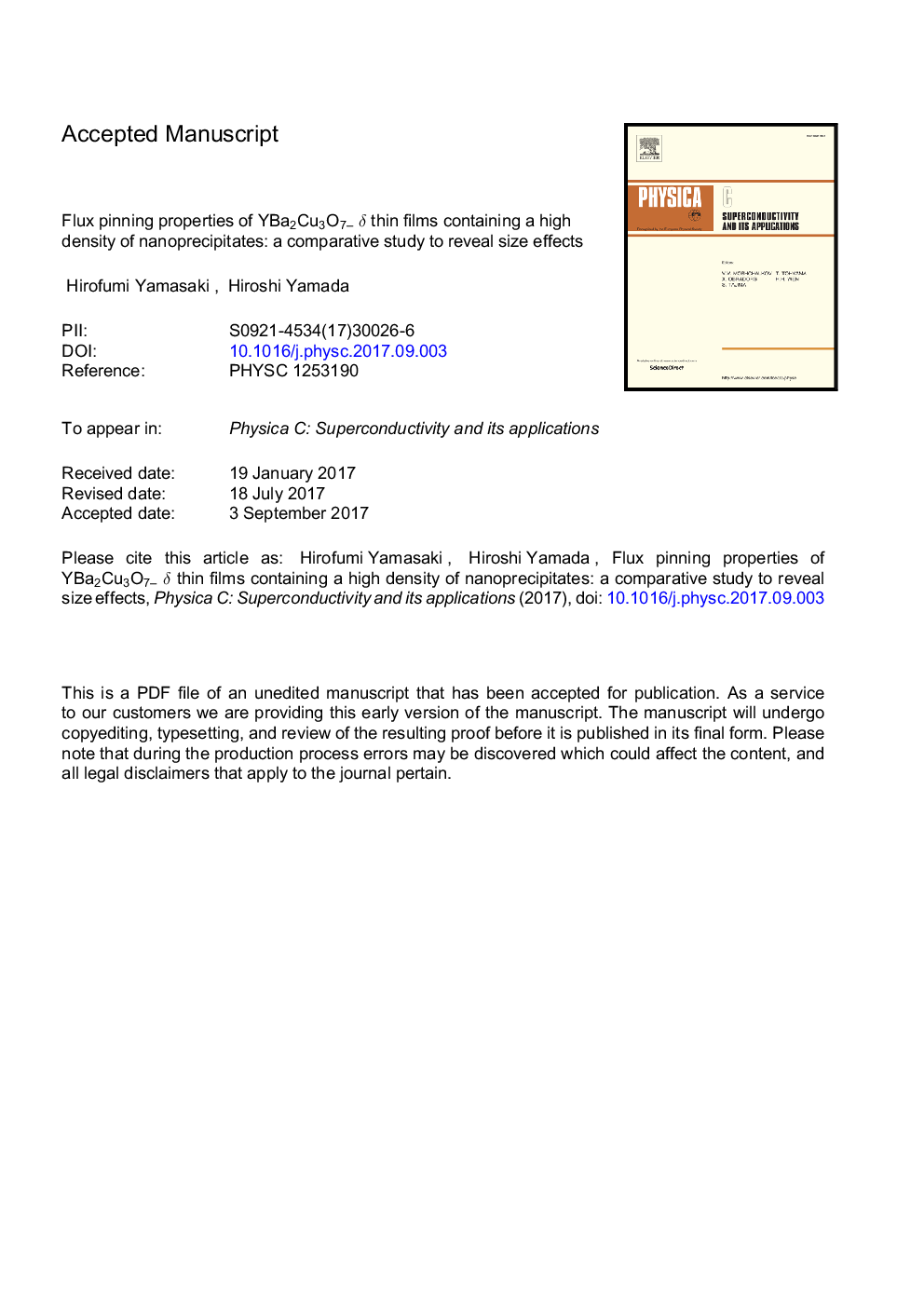| Article ID | Journal | Published Year | Pages | File Type |
|---|---|---|---|---|
| 5492276 | Physica C: Superconductivity and its Applications | 2017 | 43 Pages |
Abstract
Temperature dependence of critical current density Jc(H, T) was measured in moderate magnetic fields (H ⥠film) in two thermally co-evaporated YBa2Cu3O7-δ (YBCO) thin films (A, B) and two YBCO films (C, D) deposited using a pulsed-laser deposition method. All sample films were grown epitaxially with the c-axis perpendicular to the surface of a single-crystalline substrate. Transmission electron microscopy observation revealed that these four films contained a high density of nanoprecipitates with typical sizes of 3.6 - 5.0â¯nm (A), 5.0 - 7.1â¯nm (B), 7.0 - 10.1â¯nm (C) and 8.7 - 14.3â¯nm (D). Films A and B contained very fine nanoprecipitates, whose typical diameters Dtyp are smaller than double the estimated Ginzburg-Landau coherence length 2ξab at Tâ¯=â¯77â¯K, and exhibited a steep increase of Jc with decreasing temperature. Whereas, film D, which contained relatively large nanoprecipitates (Dtypâ¯>â¯2ξab at Tâ¯â¤â¯70â¯K), exhibited a gradual increase in Jc. This led to a remarkable crossing of the Jc(T) curves. The temperature dependence of Jc(H//c) under a fixed magnetic field is approximated by Jc â¼Â (1 - T/Tc)m(1â¯+â¯T/Tc)2 where the index m is larger for films containing finer precipitates; that is, m(A)â¯>â¯m(B)â¯>â¯m(C)â¯>â¯m(D). This means that finer nanoprecipitates generally cause steeper Jc increase at low temperatures, which is the origin of the observed crossing phenomenon. The experimental results are reasonably explained by several theoretical models based on the direct summation of elementary pinning forces fp calculated by core pinning interactions.
Related Topics
Physical Sciences and Engineering
Physics and Astronomy
Condensed Matter Physics
Authors
Hirofumi Yamasaki, Hiroshi Yamada,
